Adonis pleco - Acanthicus adonis
Scientific name: Acanthicus adonis
Common name: Adonis pleco
Family: Loricariidae
Usual size in fish tanks: 20 - 25 cm (7.87 - 9.84 inch)
014
Recommended pH range: 6 - 7
Recommended water hardness: 5 - 14°N (89.29 - 250ppm)
0°C 32°F30°C 86°F
Recommended temperature range: 24 - 27 °C (75.2 - 80.6°F)
The way how these fish reproduce: Spawning
Where the species comes from: South America
Temperament to its own species: peaceful
Temperament toward other fish species: peaceful
Usual place in the tank: Bottom levels
Origin
The Adonis Pleco (Acanthicus adonis) originates from the river basins of South America, primarily the Amazon River in Brazil and Peru. These plecos are typically found in fast-moving, well-oxygenated waters with plenty of rocks, driftwood, and caves that serve as natural hiding spots.
Lifespan
With proper care, the Adonis Pleco can live for up to 16 years in captivity. To support their longevity, it’s important to maintain clean water conditions, a well-balanced diet, and sufficient space for them to thrive.
Short Description
The Adonis Pleco is a striking species, particularly in its juvenile phase, when it has a series of white spots scattered across its body. As it matures, these spots may fade, leaving the fish with a darker, more uniform coloration. It’s important to note that the Adonis Pleco can grow quite large in aquariums, reaching sizes between 20 - 25 cm (7.87 - 9.84 inches). Due to their size, a spacious tank is required, ideally with a length three times their body size and a width twice their body length. A tank of at least 250 gallons (~946 liters) is recommended for an adult specimen.
While juvenile Adonis Plecos are generally peaceful, they become increasingly territorial as they mature, particularly males. For this reason, it’s advisable to keep them as solitary bottom dwellers in the tank, avoiding the inclusion of other plecos or bottom-dwelling fish to prevent aggressive territorial behavior.
Tank Requirements and Setup
Adonis Plecos require a large aquarium with plenty of room to swim and explore. Since they are bottom-dwellers, it’s crucial to provide a tank with a spacious footprint. The substrate should allow for burrowing behavior, and decorations like rocks and driftwood should be added to create hiding places, which help them feel secure.
They prefer well-oxygenated water, so a powerful filtration system is essential to maintain water quality. Regular water changes are also important to keep ammonia, nitrite, and nitrate levels under control. Additionally, Adonis Plecos thrive in low-light environments, so adding floating plants to dim the lighting is recommended. Avoid live plants in the substrate, as these plecos are known to burrow and may disturb or uproot the plants. However, plants attached to driftwood or rocks are suitable for tanks with Adonis Plecos, as they won’t be disturbed by the fish's burrowing behavior.
The recommended water parameters for Adonis Plecos are:
- pH: 6.0 - 7.0
- Water hardness (dGH): 5 - 14°N (89.29 - 250 ppm)
- Temperature: 24 - 27°C (75.2 - 80.6°F)
Temperament
Juvenile Adonis Plecos are generally peaceful and can cohabit with other fish species. However, as they grow, they become highly territorial, particularly males. This aggressive behavior is more pronounced toward other bottom-dwelling fish, so it’s best to keep them alone in the tank. That said, if the aquarium has plenty of caves and hiding spots, territoriality can be minimized, as each fish will have its own space. They may show peaceful behavior toward mid-level and surface-dwelling fish, but tank mates should be chosen carefully to avoid stress or conflict.
Feeding
Adonis Plecos are omnivores with a strong preference for protein-rich foods. In captivity, they will readily accept a variety of foods, including bloodworms, larvae, sinking granules, and algae wafers. Occasionally, they can be given protein-rich foods such as beef heart, but this should be offered sparingly to avoid digestive issues.
For a well-balanced diet, provide a mix of the following:
- Sinking algae wafers
- Bloodworms and insect larvae
- Sinking granules or tablets
- Blanched vegetables like zucchini and cucumber
Regular feeding of vegetable matter, such as spinach and zucchini, helps support their digestion and overall health.
Sexing
Determining the sex of Adonis Plecos can be difficult, especially in young specimens. There are no easily visible differences between males and females. As they mature, males may develop broader heads and more prominent odontodes (spiny growths) on their pectoral fins, but this is not a definitive method of sexing.
Breeding
Breeding Adonis Plecos in home aquariums is exceedingly rare, and there are no confirmed reports of successful spawning in captivity. In the wild, these fish are thought to create nests by digging caves along riverbanks, where the female lays eggs. The male takes over parental duties, guarding the eggs and driving the female away after spawning. The male continues to protect the fry until they are free-swimming and can fend for themselves.
It is believed that Adonis Plecos require highly specific conditions to breed, including ample space, perfect water parameters, and secluded nesting areas, making breeding extremely challenging for most aquarists.
Final Thoughts
The Adonis Pleco is a captivating and unique species, but it requires a dedicated and spacious tank with careful attention to water quality and diet. While juvenile specimens may be peaceful, mature individuals tend to become territorial and aggressive toward other bottom-dwelling fish. If you have the space and experience to meet their needs, the Adonis Pleco can be a rewarding addition to your aquarium for many years to come.
Pictures
Bought by aqua-fish.net from jjphoto.dk.






 Lyre
Lyre  Bristlenose
Bristlenose  Gold
Gold  Bushymouth
Bushymouth  Spotted
Spotted 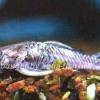 Medusa
Medusa  Bristlenose
Bristlenose 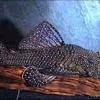 Starlight
Starlight  Spotted
Spotted  Catfish
Catfish  Bushynose
Bushynose  Bristlenose
Bristlenose  Green
Green  LDA-33
LDA-33  Snowflake
Snowflake  Gold
Gold  Gold
Gold  Bulldog
Bulldog  Dasyloricaria
Dasyloricaria  Butterfly
Butterfly  Whiptail
Whiptail  Amazon
Amazon  Twig
Twig  Spotted
Spotted  Spotted
Spotted  Lemon
Lemon  Pleco
Pleco  Peruvian
Peruvian  Zebra
Zebra  Pleco
Pleco  Hypostomus
Hypostomus  Pleco
Pleco  Suckermouth
Suckermouth  Spotted
Spotted  Woodeating
Woodeating  Golden
Golden 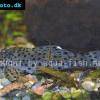 Sultan
Sultan  Multiradiatus
Multiradiatus  Marbled
Marbled  Pleco
Pleco  Dwarf
Dwarf 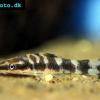 Dwarf
Dwarf  Dwarf
Dwarf 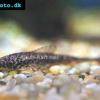 Oxyropsis
Oxyropsis  Orange
Orange  Blue
Blue  Clown
Clown  Royal
Royal  Blue
Blue  Rubber
Rubber  Goby
Goby  Wormline
Wormline  Para
Para  Tiger
Tiger 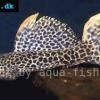 Leopard
Leopard  Spiny
Spiny 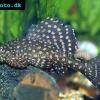 Marbled
Marbled 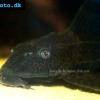 Amazon
Amazon  Common
Common  Sunshine
Sunshine  Golden
Golden